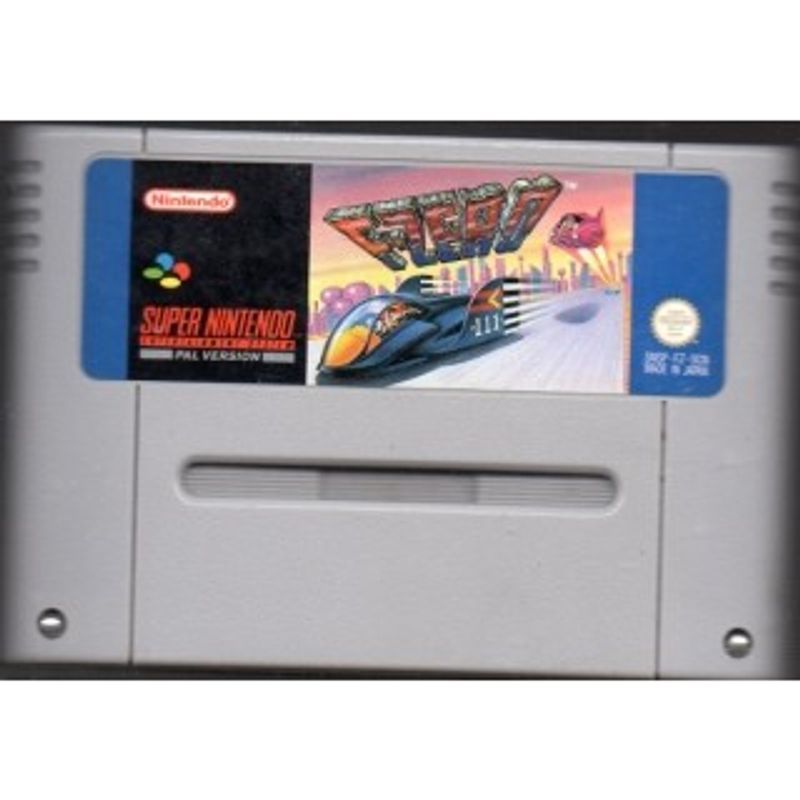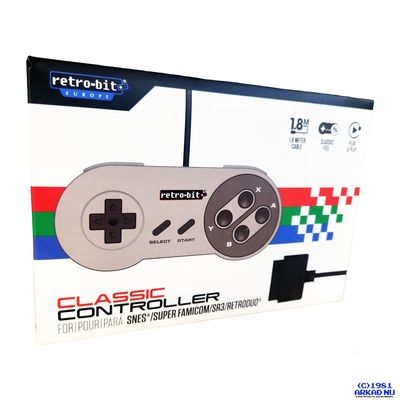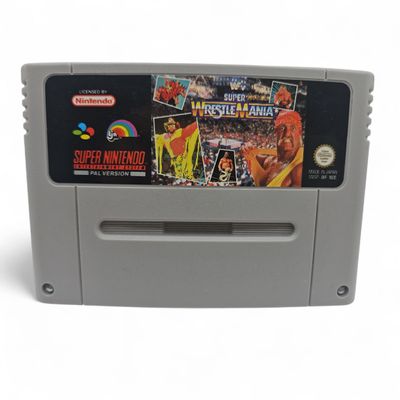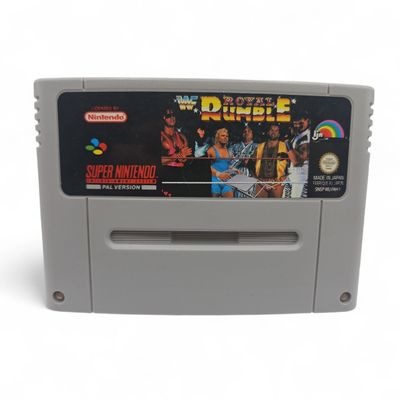F-ZERO SNES SCN
Liknande produkter
Beskrivning av F-ZERO SNES SCN
F-ZERO SNES SNSP-FZ-SCN
F-Zero is a series of futuristic racing video games originally created by Nintendo EAD with multiple games developed by outside companies. The first game was released for the Super Nintendo Entertainment System in 1990 and prompted Nintendo to create multiple sequels on succeeding gaming consoles.
The series has been known for its high-speed racing, unique characters and settings, difficult gameplay, original music, and pushing the limits of its technology to be one of the fastest racing games ever. The first game inspired the creation of games such as Daytona USAand the Wipeout series.
The series has been largely dormant since 2004, with the last title being F-Zero Climax. It has however made several appearances in other franchises such as Mario Kart and Super Smash Bros.
Each of the games in F-Zero series requires the player to beat opponents to the finish line while avoiding obstacles such as land mines and slip zones. The games usually require a mixture of memorization of the tracks and quick reflexes for its fast-paced racing gameplay. In F-Zero and F-Zero: Maximum Velocity, a speed boost is given to the player for each lap completed. Starting with F-Zero X, players may execute speed boosts if they have finished at least one lap, but now in exchange for losing energy when boosting. It is therefore necessary to use recharge strips around courses to replenish this energy, or risk exploding when it drops to zero. Strategically situated dash plates allow boosts without energy loss. In combination with course obstacles, drivers are allowed to attack each other with their vehicle bodies.
The games' fantasy worlds includes different climates and terrains, and are home to many different races and tribes of aliens. There are geographical differences from game to game, but distinctive locations recur, such as Big Blue, Mute City and Port Town. Circuits are usually set on the outskirts of cities or above them situated high in planet atmospheres at an elevation as much as 300 feet (91 m) above ground. They contain anti-gravitational guide beams on both sides of the course that keep them in place.Rich merchants from cities in the clouds or asteroids with almost uninhabitable environments invested their wealth in the construction of racing circuits.Some cities have multiple circuits—circuits not used for the Grand Prix are open to pilots for practice. The dynamic structure of the courses are colossal in scale, as most circuits feature a single lap that spans over six miles (10 km).
The vehicles used to race in these video games are known as "F-Zero machines", which are designed to hover, rather than travel on wheels. An anti-gravity unit, known as the "G-Diffuser System", allows them to drive at high speeds, while retaining a hold of the track, located from a few inches to a foot below it. However, the slip zones, also referred to as the "magnetic field block coat" in the first F-Zero game, blocks the vehicle from retaining a hold on the track. The racing machines developed for these tracks used the latest in this magnetic technology, and are able to perform tune-ups.] Out of the over forty-four known machines, only five do not weigh over a short ton] F-Zero machines have a maximum speed exceeding that of sound. This is possible due to the ultra-compact micro-plasma engines used by the machines.
Each machine has four basic performance attributes: body, boost, grip and weight. Body, boost, and grip are rated on a scale from A to E (A being the best, E, the worst).The higher a machine's Body rating, the more durable it is and the less damage it will sustain in a collision. Machines with a good Body rating are, therefore, able to withstand more attacks before exploding. The Boost rating takes into account the duration of a vehicle's boost, and how great a speed increase it provides. A machine with a high rating can travel at higher than normal speeds for a longer period of time.Grip determines how well a machine negotiates turns. A higher Grip rating means that the player's vehicle will execute steadier turns, while a low one will cause the vehicle to drift more, especially when turning tightly. Weight affects a vehicle's acceleration, grip, cornering ability, maximum speed, and the amount of damage it sustains in a collision. A lighter vehicle is superior in the first three categories, while a heavier vehicle has the advantage in the latter two.
ENDAST KASSETT







